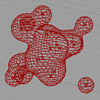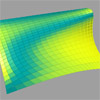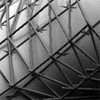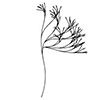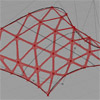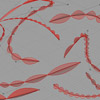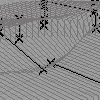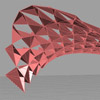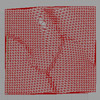Using SPM Vector Components developed by two talented people, Daniel Hambleton and Chris Walsh (website here), I’ve studied ways of displaying dynamic diagrams of form. I’ve modified an example file and found myself in a surprising formal exploration. It’s like watching the clouds, giving them meaning like a sheep, a flower, a baby… Here is a link to the Grasshopper file. Right-click and save it to your computer (don’t left-click it) [GHX: 0.8.0066: SPM […]
Search results for ‘vector’
Experimenting with various plug-ins for solar calculations, I found Daniel Da Rocha’s robust implementation of the solar position algorithm in vb.net. It calculates the solar angle of any place and time. Although it’s written in the old vb.net component, it still works great. I’m trying to create a fast and easy workflow to optimize Grasshopper models based on solar directions. This is done by projecting faces to the solar planes […]
Here are some results of fourth homework. An animate design sketch of a roof structure. Yağız, Deniz and Sacha created animated results; Derya and Sacha proposed conventional approaches to create “openings” by animating geometries. However, that does not meet the requirement of structural (and logical) intentions of the design problem. Unless some very high-tech materials were introduced to design. On the other hand, Yağız tried to create a structure that […]
This topic of trees and recursive computing is inspired by the method shown here at the Rhino Python 101 Primer. This is a beautiful method of recursion that creates tree-like shapes, composed of arcs. I constructed these arcs by using the Arc SED (start, end, direction) method. This requires start and end points and a vector that is tangent to the arc (at the start point). Therefore, the overall look […]
Today, we’ve studied fundamentals of component-based design methods. Using curves and surfaces as starting points, we’ve experienced ways of translating those entities via design criteria based on our purposes. First, a curve is used to construct a leaf structure. We’ve experienced dispatching data lists and combining them back together. Subdividing curves into points created further entities such as vectors and planes. We used those entities as inputs of regular drawing […]
Today, we’ve discussed ways of subdividing entities to create parametric definitions. Curves can be divided into segments, creating snake-like object definitions. This exercise is important regarding the management of data. Vectors and planes are used as reference entities here. Nowadays, it became clear to me that, reference planes are very important because they both include reference points and related vectors as well. The definition studied in this post includes a curve […]
SPEC disappeared from our garden suspiciously. Hopefully, we’ve already finalized its parametric survey. Can create the original model by measuring exact corner coordinates. Then, it manipulated shape by creating diverse vectors for each shape. Emre has also tried a similar approach. Can be definition was too long, and did not use data trees, therefore it is slow. But it’s very effective at offering a solution for animation. I re-captured his […]
In this experiment, I’m trying to use data recorder to change components on a surface. The component part is a standart triangular construction, but the attractor points are defined by a 2D slider that is connected to a data recorder. Data recorder remembers last 15 points, while you move the 2d slider, last 15 points are projected on the base surface. This creates an illusion as if a “snake” game […]
This study includes three main topics related to the basics of Grasshopper. The first one is the surface subdivision, the parametric definition of a surface component, that is, in this case, a simple pyramidal object. The second thing is the associative behavior of surface components with an external parameter, that is another entity in space; a curve. Traditionally, this is simply demonstrated by 1) finding the area centroids of each […]
Inspired by Andru Pavlov’s design, I used a curve to accomplish grid tearing. It’s straightforward, and from an educational perspective, this exercise includes several potentials on vector arithmetics and graph manipulation techniques. As a design domain, this definition stresses the use of associative entities in a parametric model. Any primitive or complex entity may evoke different parameters in others. You may download the Grasshopper definition here:[2012_01_06_tear]
ARCH 362: PARAMETRIC MODELING: Undergraduate Elective Course at İstanbul Bilgi University Faculty of Architecture student exercise: Deniz Yazıcı (YTU/CADU 2008) COURSE BRIEF (2011) Digital paradigm transferred parametric modeling as an alternative conception in architecture, emphasizing a focal shift from the singularity of design artifacts to the explicit and generative process of designing. While architects start to experience the construction of algorithms, computers played an increasingly important role in the adaptation of […]

